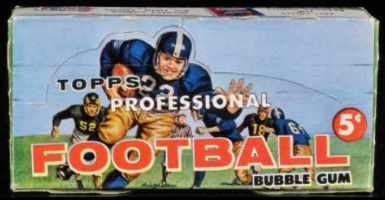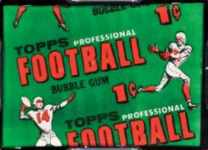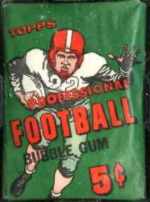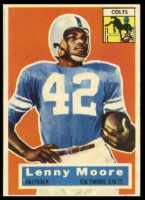1962 Topps #134B Billy Hoeft [VAR:Green Tint/Sky] (Orioles)
This is the scarce variation !![1962 Topps #134B Billy Hoeft [VAR:Green Tint/Sky] (Orioles) cards value](/jpgs/6/1962-134s.jpg)

Please wander around the website for more info, prices, values & images
on vintage baseball, football, basketball, hockey, sport and non-sports cards.


1964 Philadelphia FootballThe 1964 Philadelphia Football set contained (198) cards. The set had several rookies including: John Mackey, Herb Adderley, Willie Davis and perhaps the most famous, future-TV-Star Merlin Olsen.Note: You may be on that page right now. |

1956 Topps Football After they acquired Bowman, Topps issued its first NFL licensed
football set issuing (120) brightly colored cards.
Team cards were a nice new addition to the earlier Bowman offerings.
Also issued was a checklist and (5) special contest cards.
Most of these special cards were either tossed away or sent in
to win prizes making them quite difficult to find.
After they acquired Bowman, Topps issued its first NFL licensed
football set issuing (120) brightly colored cards.
Team cards were a nice new addition to the earlier Bowman offerings.
Also issued was a checklist and (5) special contest cards.
Most of these special cards were either tossed away or sent in
to win prizes making them quite difficult to find.
Like its early 1950's baseball issues, these cards measured in at 2-5/8" x 3-3/4", sligtly larger than the regular modern issued cards.
Each team had (9) player cards and the team card.
To make the number of cards work with the card-sheet size,
Topps printed all the cards twice on each sheet, EXCEPT the
Washington Redskins and Chicago Cardinals who were short
printed (single printed)and are more difficult to find.
Note: You may be on that page right now. |

Team Autographed / Signed Baseballs (P2)
Team signed baseballs were the thing well before single-signed
balls exploded on the market.
Click for our current
Autographed/Signed Team Baseball inventory
What is a "Team Signed Baseball" ??? Simple answer: A ball with XXX signatures of a certain team for a certain year. What is difficult is the XXX. Baseball tons of roster moves make it nearly impossible to "Get Them All". Generally, team signed baseballs from early 1900's had 10 to 15 signatures, the 1940's that jumped to 18 to 25. Joyce Sports Research Collection (Notre Dame) says "signatures must include only members of a specific team from a specific year, and there must be some approximation of completeness." Not concrete but to me a "team ball" MUST have ALL the team's STARS (unless a rookie or in season trade) and in today's market at least 20, preferably more, and the manager.
Determining Age of Team Signed Balls
Note: You may be on that page now. |

Grade/Condition Centering, corner wear, photo clarity, edges, creases, print flaws ... all combine to determine a card's condition or grade. Along with rarity/scarcity it is the major factor in a card's value.
Graded Card As values increased the condition of cards and the determination of fakes and alterations became increasingly more important. Various companies became "graders" of your cards. For a fee they would grade your card (usually on a 1 to 10 scale) and then placed in a sealed plastic holder with labelling of the vital information.
From past experiences, most people are NOT HAPPY with the grades they receive. To keep values up, graders can be extremely picky. Things you don't see, they do so don't be surprized when the NEAR MINT card you send in ends up with an EX or EX/MINT grade.
There are TOO many grading companies - if you do, do choose carefully. PSA / SGC / GAI / BGS are some of the many companies. It is good to know that getting a card graded by a company that people do not recognize or respect will usually just cost you time and money and not help you in any way.

 Top Rookies: Lenny Moore, Roosevelt Brown, Joe Schmidt, Bill George...
Top Rookies: Lenny Moore, Roosevelt Brown, Joe Schmidt, Bill George...

